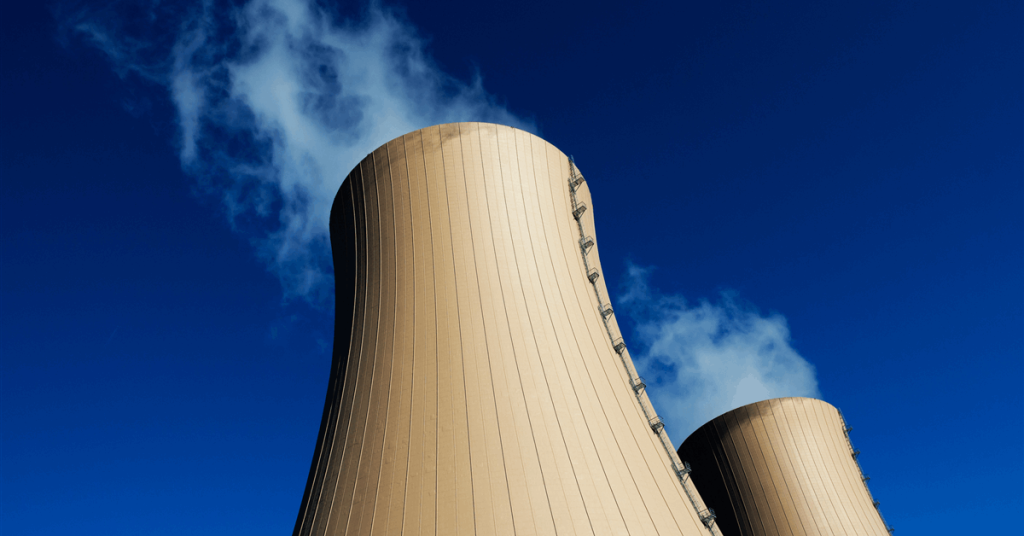President Donald Trump has signed executive orders to grow nuclear power generation and advance nuclear innovation in the United States.
“After decades of stagnation and shuttered reactors, President Trump is providing a path forward for nuclear innovation”, the Department of Energy (DOE) said in an online statement. “Today’s executive orders allow for reactor design testing at the Department of Energy’s National Labs, clear the way for construction on federal lands to protect national and economic security, and remove regulatory barriers by requiring the Nuclear Regulatory Commission to issue timely licensing decisions”.
Michael Kratsios, director of the White House Office of Science and Technology, commented, “Over the last 30 years, we stopped building nuclear reactors in America – that ends now”.
A new nuclear power plant, however, came online 2023. The newest unit of Plant Vogtle, first put into service in the 1980s, is the first nuclear reactor activated in the country since 2016, according to the Energy Information Administration (EIA). Georgia Power activated another reactor at the plant last year, making it the biggest nuclear plant in the U.S., according to the EIA.
As of last year the U.S. had 94 operating nuclear reactors at 54 power plants, giving the nation the largest commercial nuclear power production fleet in the world, according to an EIA report April 24, 2025. These units had a combined capacity of nearly 97 gigawatts. Most of these were built between 1970 and 1990, according to the EIA.
“The two reactors at Vogtle and one reactor at Watts Bar in Tennessee are the only new nuclear reactors to come online in the United States since 1996”, the EIA report said, adding 12 nuclear reactors have permanently closed in the U.S. since 2013.
Kratsios added, “Today’s executive orders are the most significant nuclear regulatory reform actions taken in decades. We are restoring a strong American nuclear industrial base, rebuilding a secure and sovereign domestic nuclear fuel supply chain, and leading the world towards a future fueled by American nuclear energy”.
“These actions are critical to American energy independence and continued dominance in AI and other emerging technologies”, Kratsios said.
Interior Secretary Doug Burgum said, “As energy demand continues to surge, expanding our existing nuclear fleet and investing in advanced nuclear technologies ensures we have reliable energy to power our homes, fuel for President Trump’s manufacturing revolution, and a stronger electric grid”.
Concurrently the DOE announced another executive order to “rebuild public trust in the national science enterprise”.
“The EO defines Gold Standard Science and requires federal research agencies to conform their existing programs and activities to these fundamentals”, the DOE said.
“Gold Standard Science is just that – science that meets the Gold Standard”, the agency added. “It’s reproducible, transparent, falsifiable, subject to unbiased peer review, clear about errors and uncertainties, skeptical of assumptions, collaborative, interdisciplinary, accepting of negative results, and free from conflicts of interests”.
Fusion Technology
The federal government has already been promoting fusion research and development to move nuclear energy utilization beyond fission. It has also partnered with Japan and the United Kingdom to advance commercial fusion, as well as the European Union to curb global reliance on Russia in the nuclear supply chain. The U.S. has also signed agreements with foreign countries for civil nuclear cooperation that would promote American technology, including with Lithuania, the Philippines, Singapore and South Korea.
On January 16 the DOE announced the first selections for funding under the Fusion Innovative Research Engine (FIRE) Collaboratives, a program to close knowledge and technology gaps in the design and building of a commercially scalable pilot fusion plant.
Provisionally awarded a total of $107 million, the six selected projects involve building nuclear blanket testing capabilities at the Idaho National Laboratory, developing materials at the University of Tennessee-Knoxville, testing materials and developing advanced simulation at the Massachusetts Institute of Technology, developing target injector technology for inertial fusion energy concepts, and developing fusion fuel-cycle testing capabilities at the Savannah River National Laboratory.
The collaboratives program “represents a significant step forward in FES’s commitment to advancing fusion energy research and development, and aims to create new economic opportunities, maintain US leadership in fusion, bolster US-based manufacturing and supply chains, and enable the development of technologies crucial for national security, energy security, and defense”, the DOE said then, referring to its Fusion Energy Sciences (FES) program.
Concurrently the DOE announced that several privately funded fusion companies that were among those awarded a total of $46 million in May 2023 had completed early critical-path milestones under the Milestone Program.
According to the DOE’s “Fusion Energy Strategy” released June 2024, the U.S. should have pilot fusion plants before 2040. In the 2040s, commercial deployment should already be underway, as envisioned by the strategy.
To contact the author, email jov.onsat@rigzone.com
element
var scriptTag = document.createElement(‘script’);
scriptTag.src = url;
scriptTag.async = true;
scriptTag.onload = implementationCode;
scriptTag.onreadystatechange = implementationCode;
location.appendChild(scriptTag);
};
var div = document.getElementById(‘rigzonelogo’);
div.innerHTML += ” +
‘‘ +
”;
var initJobSearch = function () {
//console.log(“call back”);
}
var addMetaPixel = function () {
if (-1 > -1 || -1 > -1) {
/*Meta Pixel Code*/
!function(f,b,e,v,n,t,s)
{if(f.fbq)return;n=f.fbq=function(){n.callMethod?
n.callMethod.apply(n,arguments):n.queue.push(arguments)};
if(!f._fbq)f._fbq=n;n.push=n;n.loaded=!0;n.version=’2.0′;
n.queue=[];t=b.createElement(e);t.async=!0;
t.src=v;s=b.getElementsByTagName(e)[0];
s.parentNode.insertBefore(t,s)}(window, document,’script’,
‘https://connect.facebook.net/en_US/fbevents.js’);
fbq(‘init’, ‘1517407191885185’);
fbq(‘track’, ‘PageView’);
/*End Meta Pixel Code*/
} else if (0 > -1 && 87 > -1)
{
/*Meta Pixel Code*/
!function(f,b,e,v,n,t,s)
{if(f.fbq)return;n=f.fbq=function(){n.callMethod?
n.callMethod.apply(n,arguments):n.queue.push(arguments)};
if(!f._fbq)f._fbq=n;n.push=n;n.loaded=!0;n.version=’2.0′;
n.queue=[];t=b.createElement(e);t.async=!0;
t.src=v;s=b.getElementsByTagName(e)[0];
s.parentNode.insertBefore(t,s)}(window, document,’script’,
‘https://connect.facebook.net/en_US/fbevents.js’);
fbq(‘init’, ‘1517407191885185’);
fbq(‘track’, ‘PageView’);
/*End Meta Pixel Code*/
}
}
// function gtmFunctionForLayout()
// {
//loadJS(“https://www.googletagmanager.com/gtag/js?id=G-K6ZDLWV6VX”, initJobSearch, document.body);
//}
// window.onload = (e => {
// setTimeout(
// function () {
// document.addEventListener(“DOMContentLoaded”, function () {
// // Select all anchor elements with class ‘ui-tabs-anchor’
// const anchors = document.querySelectorAll(‘a .ui-tabs-anchor’);
// // Loop through each anchor and remove the role attribute if it is set to “presentation”
// anchors.forEach(anchor => {
// if (anchor.getAttribute(‘role’) === ‘presentation’) {
// anchor.removeAttribute(‘role’);
// }
// });
// });
// }
// , 200);
//});

